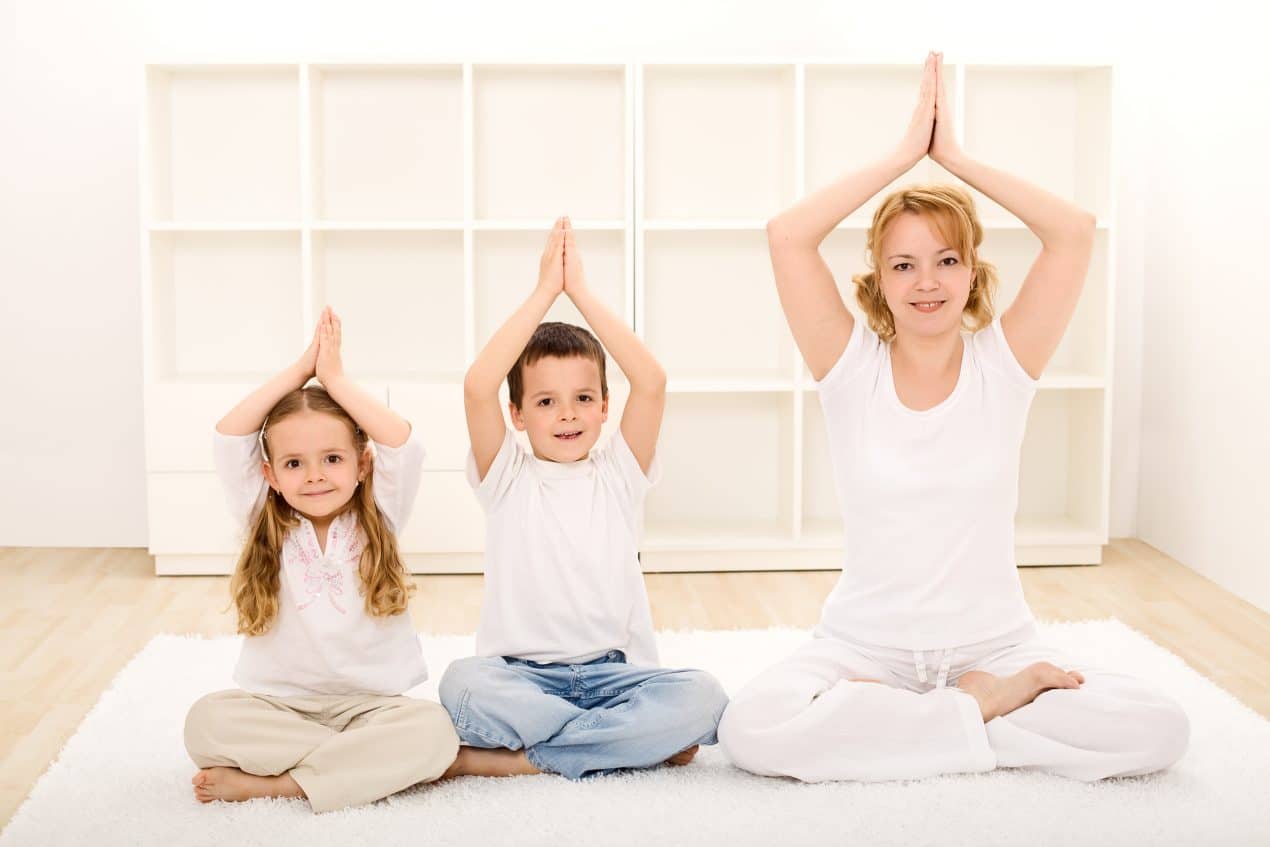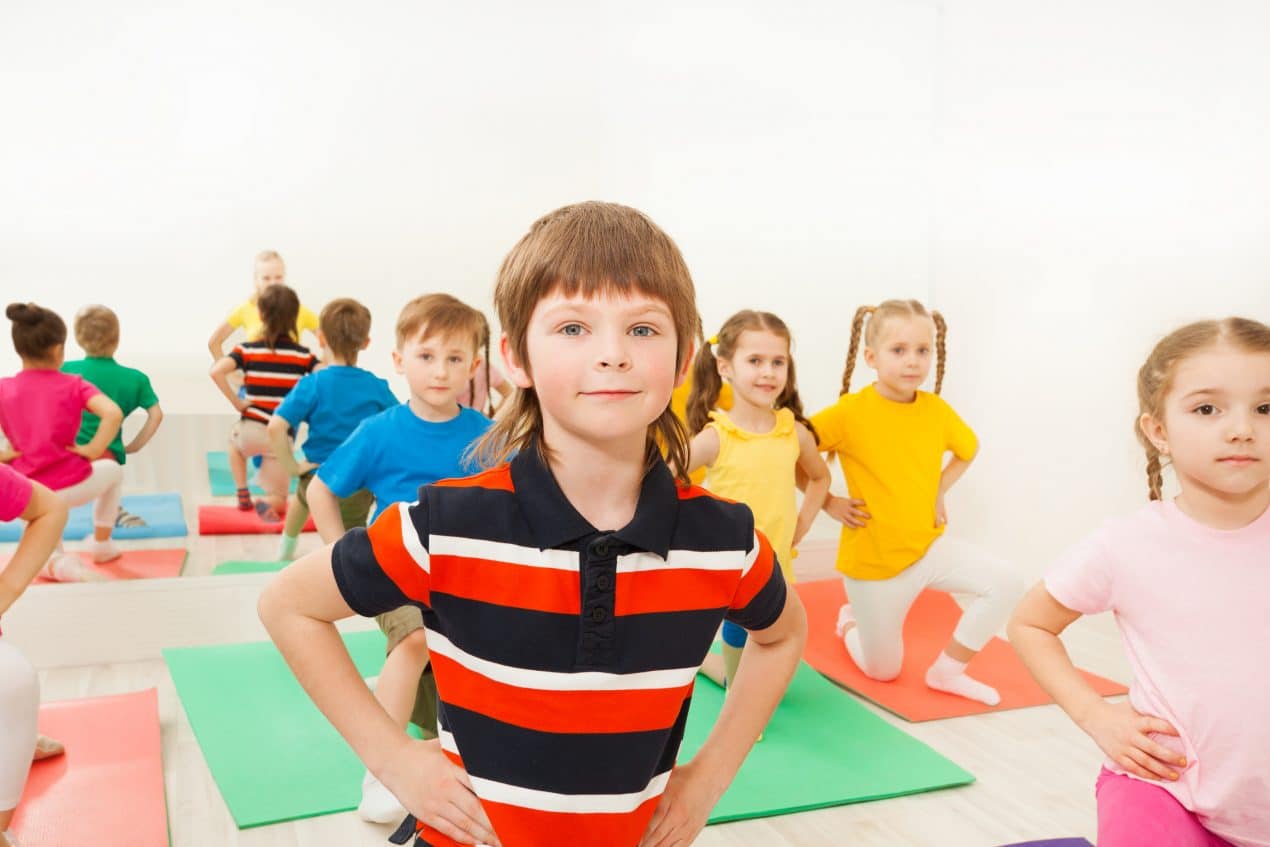
YOGA IS OFTEN thought of in terms of physical postures rather than the more holistic focus of embodying mind, body and breath.
Practising yoga may assist in strength, balance, flexibility and body awareness. Just as importantly it can support the development of coping skills, responses to stress and anxiety, and help regulate emotions.
When we are anxious or in heightened states of arousal, physiologically the sympathetic nervous system is activated. This part of our nervous system manages our responses to threat or danger – commonly referred to as the fight, flight or freeze response. Including specific breathing strategies as part of a yoga practice (along with the physical poses) can help activate the parasympathetic nervous system.
Activation of the parasympathetic nervous system can help reduce anxiety, release difficult emotions and tensions in the body, support healthy sleep, improve digestion, mood and behaviour, and overall support a healthy functioning physical body.

Yoga can be practised individually or in groups and at home or in a formal class-led setting.
What is known about children with autism and yoga?
In 2010 Radhakrishna conducted a small-scale study with six children in India who participated in a 10-month programme of regular yoga. Practice was both at home and in a class-led setting.
Radhakrishna was interested in imitation skills in tasks such as movement, vocalisation, oral facial movements and imitating breathing exercises. The results indicated an improvement in the ability to imitate others in both body and facial movements, increased skills in eye contact, sitting tolerance, non-verbal communication and receptiveness to verbal commands and movement.
Further study was recommended to explore more fully the effectiveness yoga as an opportunity to increase imitation, cognitive and social and communication skills for autistic children.
In 2011 Rosenblatt and others studied the effectiveness of an eight-week multimodal therapy programme with 24 children aged 3-16 years.
The programme included yoga, dance and music therapy based on supporting relaxation responses. Each session followed the same format. Children were provided with verbal instructions and pictures. Tools such as pinwheels and bubbles were used to help children experience their breath.
Children were encouraged to do whatever they were able to do in terms of the physical postures (i.e. it was a non-competitive environment). Parents were provided with a recording of the music from the class and guidelines for practicing at home. At the end of eight weeks most children could do many of the 18 postures shown.
The results showed positive changes in behaviours such as aggression, anxiety and attention for the 5-12 year old group. Further research was recommended.
Occupational therapists Koenig, Buckley-Reen & Garg (2012) conducted research when introducing a yoga programme (both breathing strategies and yoga poses) into a school setting.
They had 48 participants aged 5-12 years using a control group research design. The results of the study showed improvement of behaviours (anxiety, mood and general behaviour) in the children who practiced yoga consistently over a 16-week period. The researchers commented on the increased use of complementary and alternative medicine (CAM) therapies in the United States for both adults and children during the 2000s – namely deep breathing, meditation, massage and yoga.
Occupational therapists were found to have mirrored the trend in CAM, integrating yoga and movement programmes into clinic and school-based practice. They recommended further studies were required.

While there are limited studies specifically relating to yoga and autistic children, the research in general indicates there may be some benefits such as: increased social-communication skills; awareness and expression of emotion; reduced anxiety; reduction in challenging behaviours; increased body awareness; and a positive sense of self.
What next?
Yoga can be practised individually or in groups and at home or in a formal class-led setting. There are numerous apps and card activities available online that make it an easily accessible and affordable way to see if yoga is something for your child and even the whole family to take part in.
Things you may like to consider
- Age and mobility of your child/ren (yoga poses can be done standing, seated and lying down)
- Choose poses and breathing exercises that children can succeed at to build up self-esteem
- Maybe dedicate a space in the house for yoga practice?
- How might yoga be introduced in a fun way – maybe watch some You-tube clips, make it into a fun game, and/or practice yoga alongside your child/ren?
- Is there a children’s yoga class nearby? (visit the studio and meet with the teacher to find out about class size & style, lighting and noise levels e.g. is music played)
- How might attending a class fit with your child’s schedule?
- Is your child interested in giving it a go?
Summary: While there are limited studies specifically relating to yoga and autistic children, the research in general indicates there may be some benefits such as: increased social-communication skills; awareness and expression of emotion; reduced anxiety; reduction in challenging behaviours; increased body awareness; and a positive sense of self.
- Julie Peake was a researcher for Altogether Autism and Parent to Parent.
- This article first appeared in Altogether Autism Journal 3, 2019.
References
Koenig, K., Buckley-Reen, A., Garg, S. (2012). Efficacy of the get ready to learn yoga program among children with autism spectrum disorders: A pre-test-post-test control group design. American Journal of Occupational Therapy. Sept/Oct 2012, Vol 66, 538-546.
Radhakrishna, S. (2010). Application of integrated yoga therapy to increase imitation skills in children with autism spectrum disorder. International Journal of Yoga, Jan-Jun 3 (1); 26-30.
Rosenblatt, L., Gorantla, S., Torres, J., Yarmush, R., Rao, S., Park, E., Denninger, J., Benson, H., Fricchione, G., Bernstein, B, Levine, J. (2011). Relaxation response-based yoga improves functioning in young children with autism: A pilot study. Alternative Complementary Medicine. Nov, 17 (11); 1029-1035.


